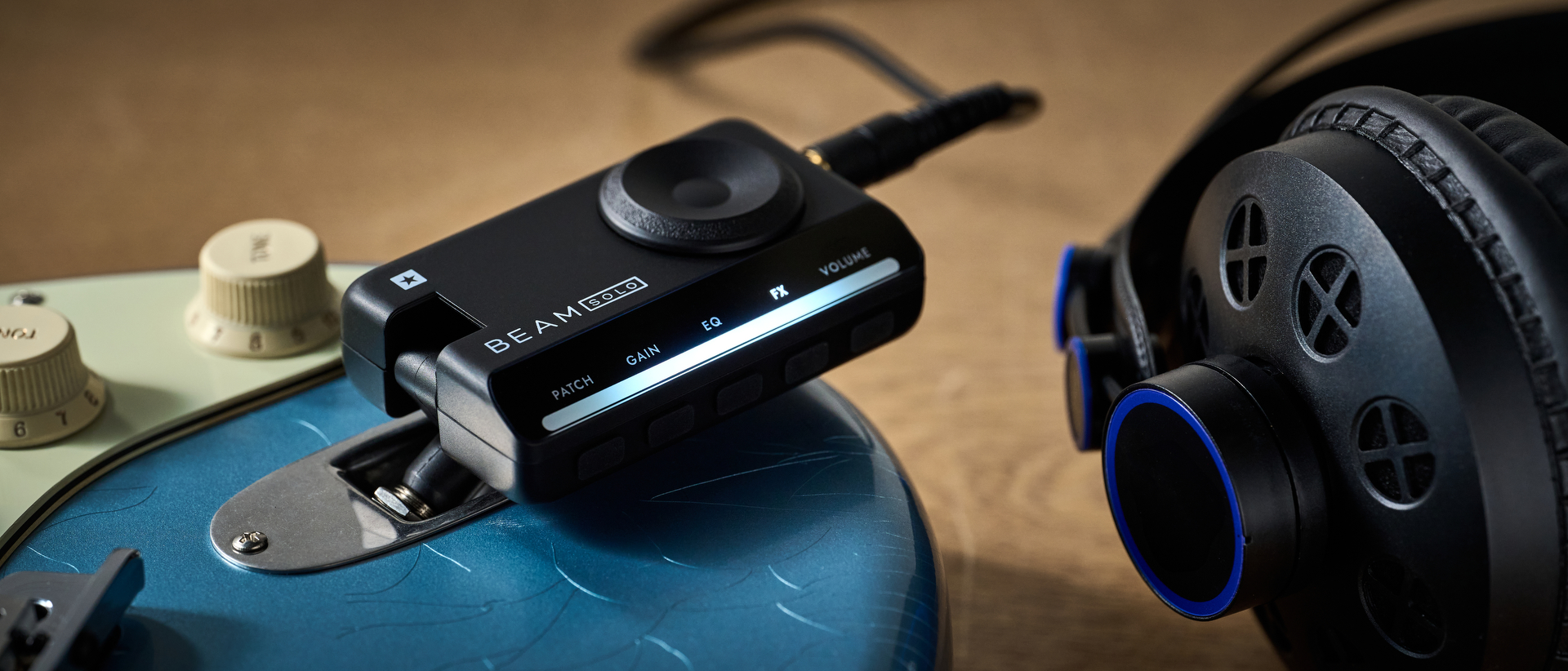Best clip-on guitar tuners 2025: hit the right note with my top pick of cost-effective tuners
Whether you play acoustic, electric, or bass, these clip-on tuners offer a quick, easy, and affordable way to achieve concert pitch every time you pick up your instrument
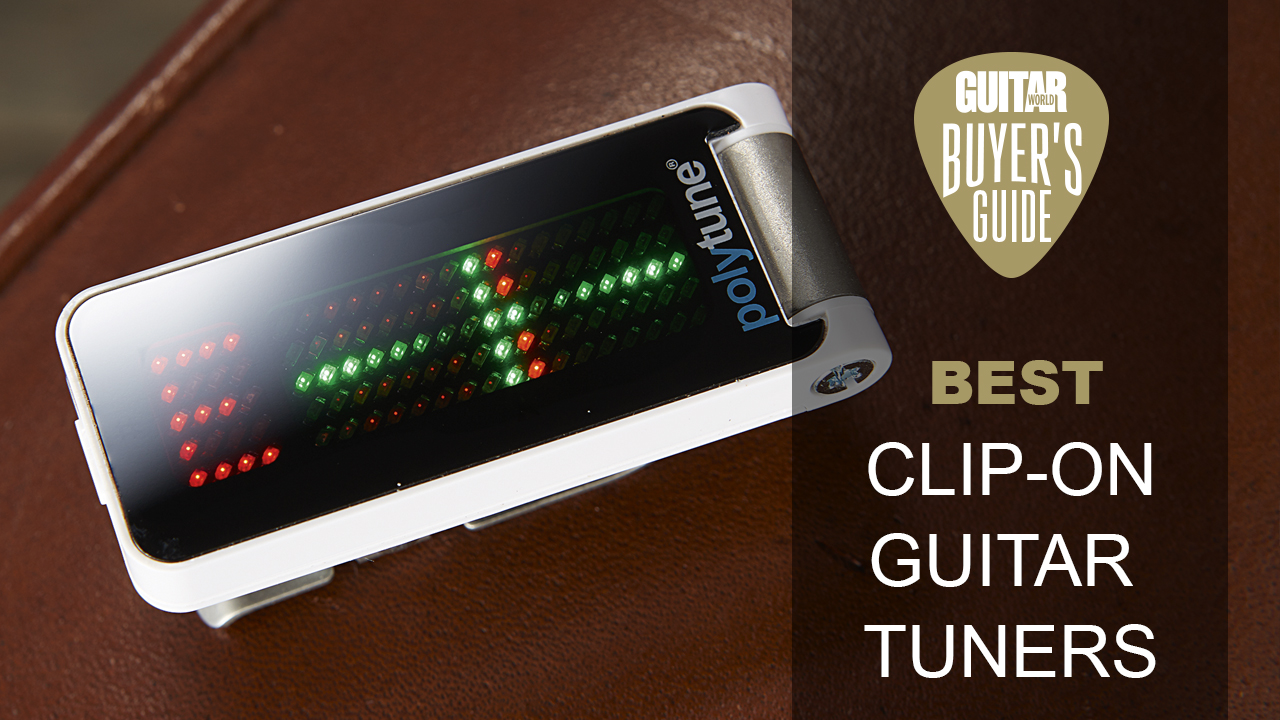
A tuner really is an essential bit of kit for any guitarist. You might see them in pedal form which is great for some electric guitar players, but the best clip-on tuners represent an elegant solution for any guitarist, whether you play electric, acoustic, bass or ukulele.
Clip-on tuners, as you might expect, clip onto your guitar’s headstock and work by detecting the vibrations caused by the moving strings. You then get a read-out of the note and whether you’re sharp or flat on the display. This means you can use them in noisy environments, and unlike pedal tuners, they don’t require any cables or external power other than batteries. Many now also feature rechargeable lithium batteries so there are no hidden costs.
The best clip-on tuners will work on a variety of guitars, so I’d recommend them to anyone who plays a stringed instrument. They’re discrete and many of the higher-end models are just as accurate as some of the best pedal tuners I’ve tried.
In my opinion, the best option right now is the TC Electronic Polytune Clip. It’s got a bright screen which is ideal for dark stages, comes complete with 3 tuning settings and the tuning accuracy is second to none.
With so many to choose from nowadays, I’ve pieced together this list, covering the best options on the market, and compiled some a handy FAQ section to ensure you have all the knowledge before you buy.
On the hunt for guitar gear savings this Black Friday? Shop our handpicked selection of the best Black Friday guitar deals.
My top picks
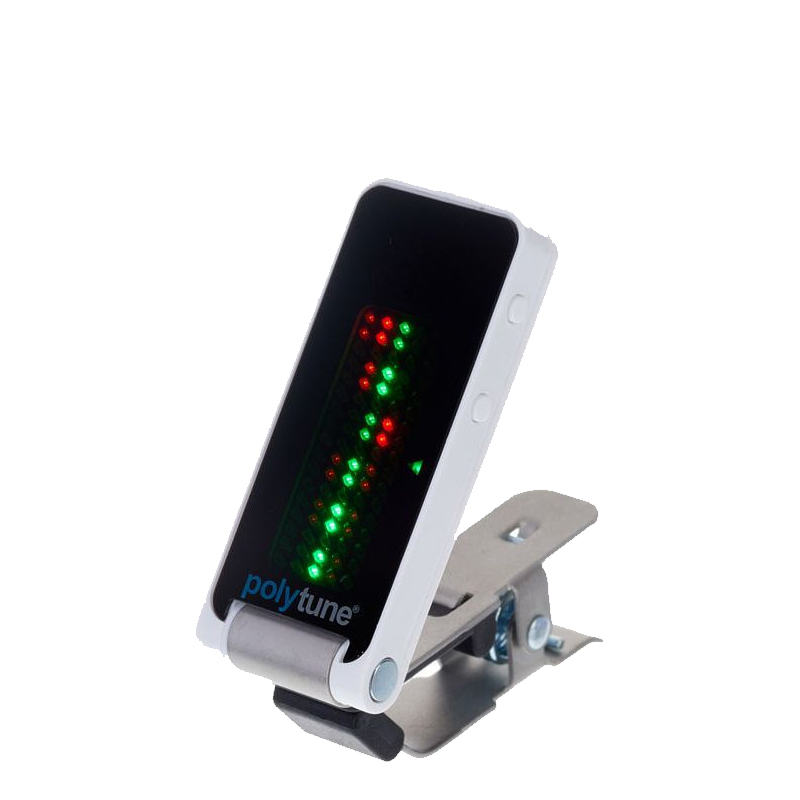
The Polytune Clip shows that you don’t need a fancy floor unit to have a lot of features in a tuner. It delivers remarkable performance, with chromatic, strobe, and polyphonic modes that make it a great option for players at all levels.
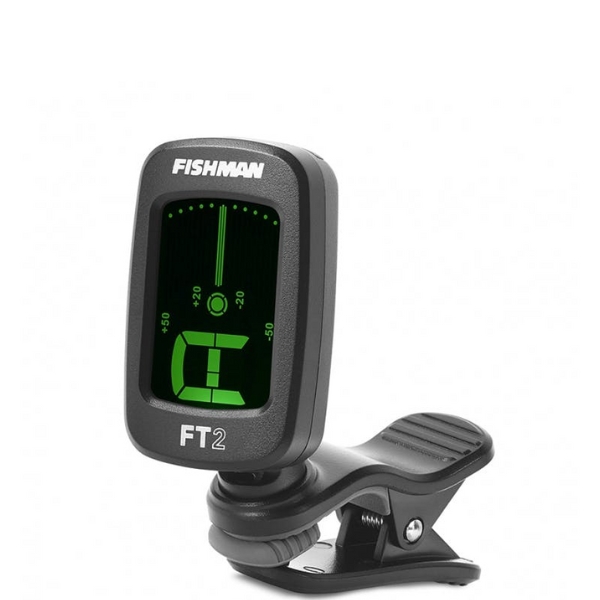
If you’re looking for a cheap and cheerful clip-on guitar tuner that’s accurate to a cent either way, and you don’t need bells and whistles, the FT-2 is hard to beat. Coming in at around less than 15 bucks, it's a proper bargain.
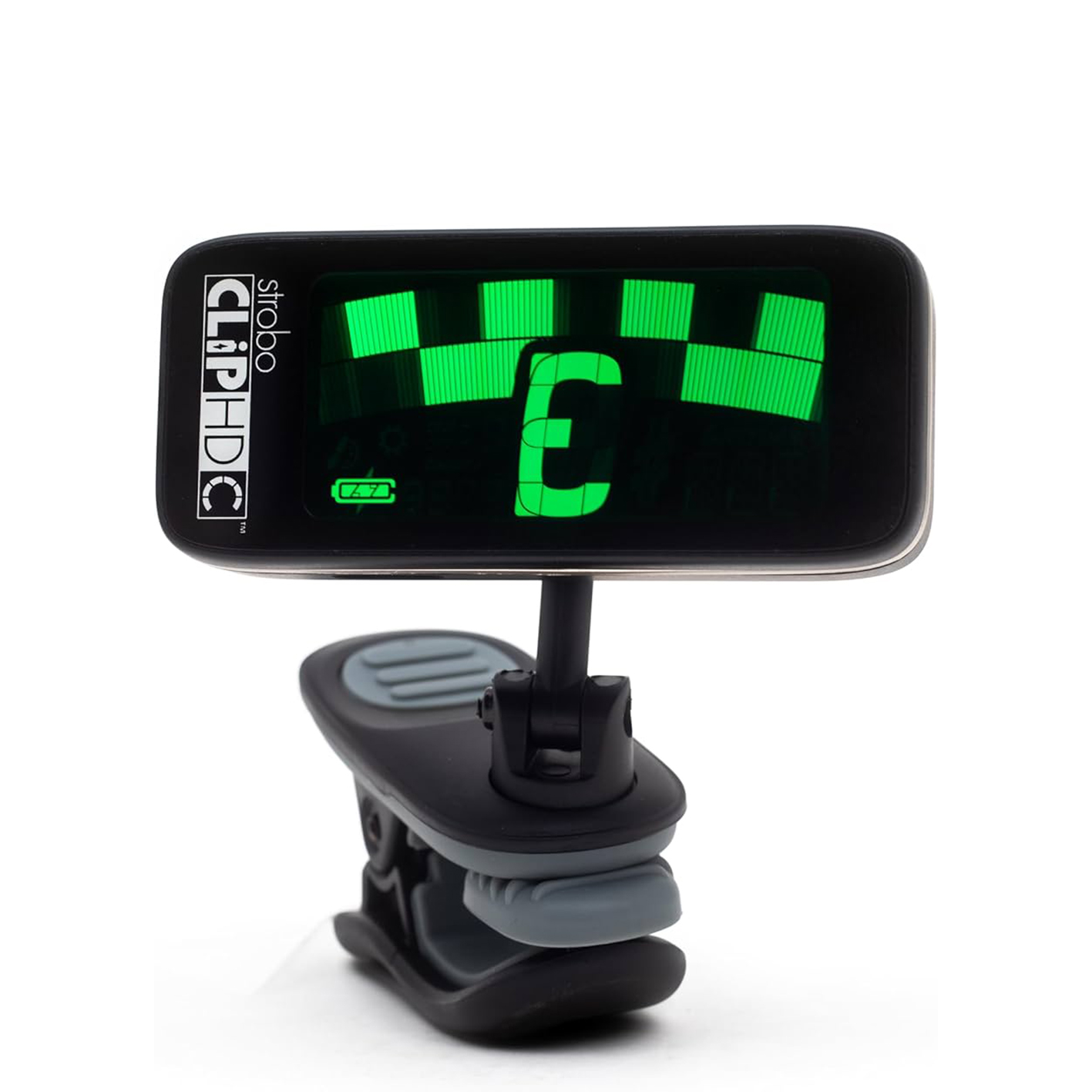
The StroboClip HDC has a huge HD screen, soft rubber-gripped jaws, drop tuning and capo settings, and it utilizes very clever technology not often found in a clip-on tuner. This tuner can accommodate over 50 of Peterson’s sweetened tunings, taking account the tuning foibles of some of the most popular guitars.
Best overall
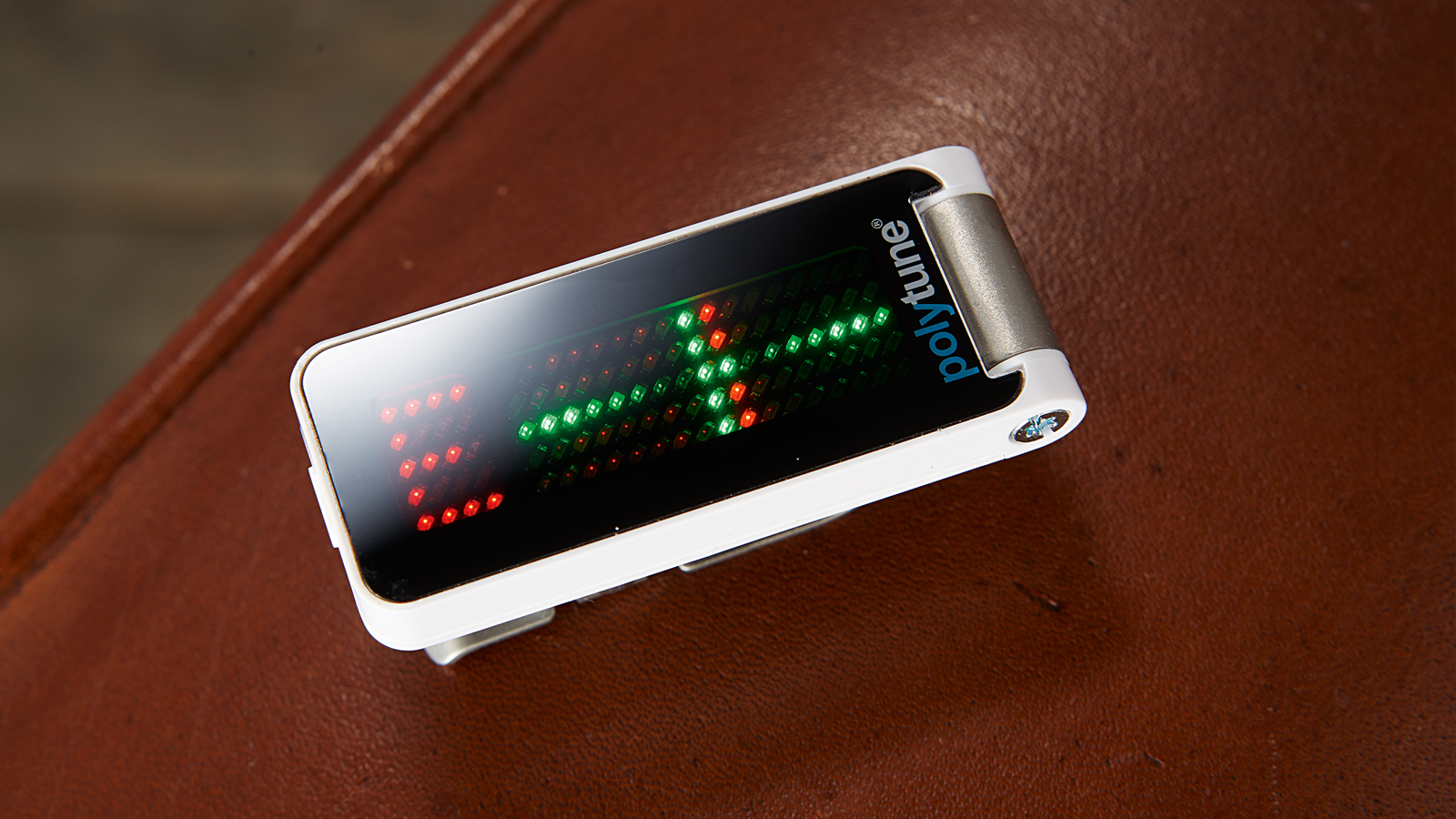
1. TC Electronic Polytune Clip
Our expert review:
Specifications
Reasons to buy
Reasons to avoid
The Polytune Clip shows that you don’t need a fancy floor unit to have a lot of features in a tuner. It delivers remarkable performance, with chromatic, strobe, and polyphonic modes that make it a great option for players at all levels.
In chromatic mode, it offers an accuracy of 0.5 cents, which should be more than enough to put your guitar in tune. Strobe mode offers 0.02 cents accuracy, which means it is within one 5,000th of a semitone, which should satisfy most human ears.
The PolyTune Clip is getting on a bit now, but still I find the polytune mode impresses in its ability to display all six strings at once, making on-the-fly adjustments quick and easy. in use I found the screen to be more than bright enough for dark stages and you get up to 18 hours of battery time so you won't be reaching for freshies too quickly.
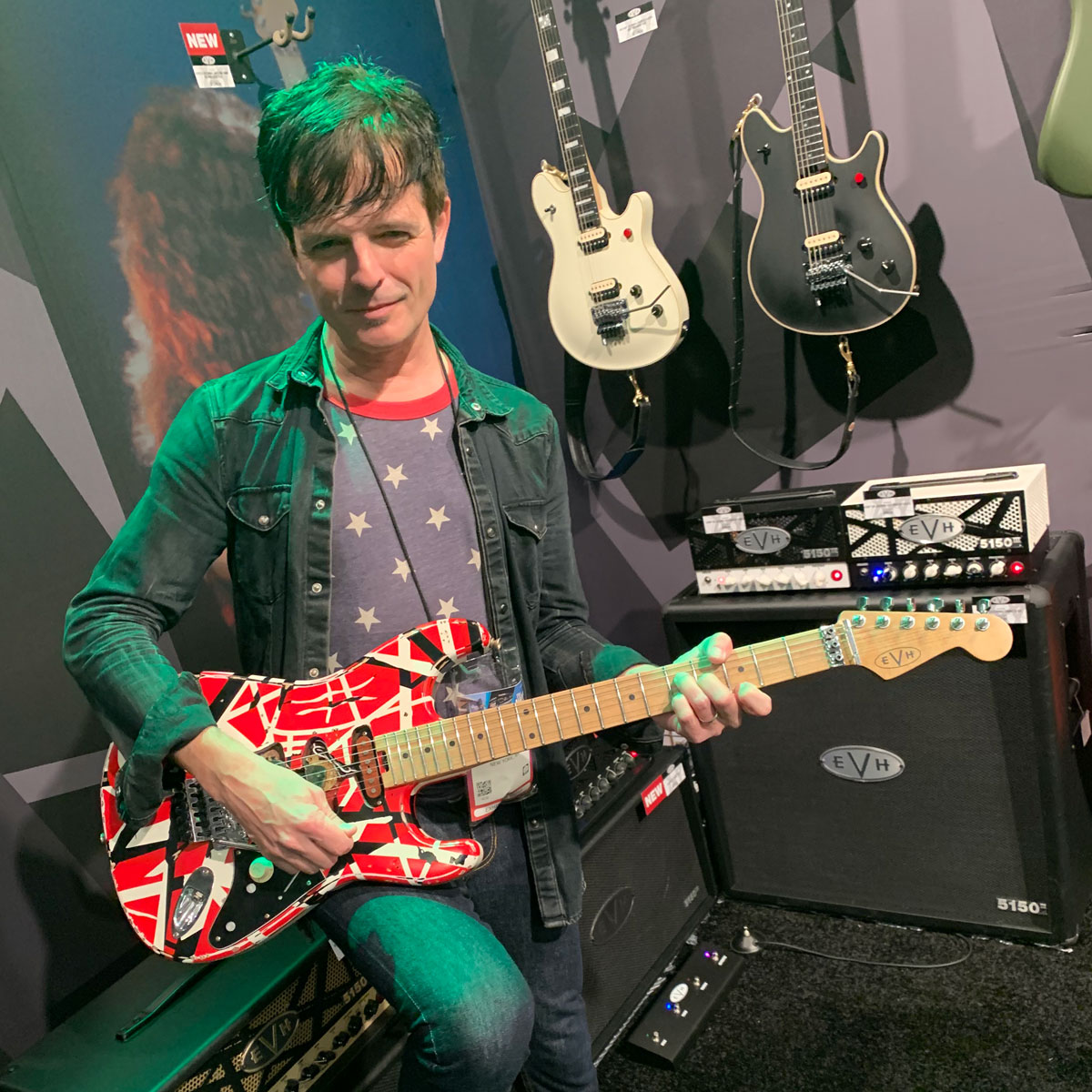
"I could go on, but what other innovative clip-on tuner does this much so seamlessly for under fifty bucks?"
Read more: TC Electronic Polytune Clip review
Best budget
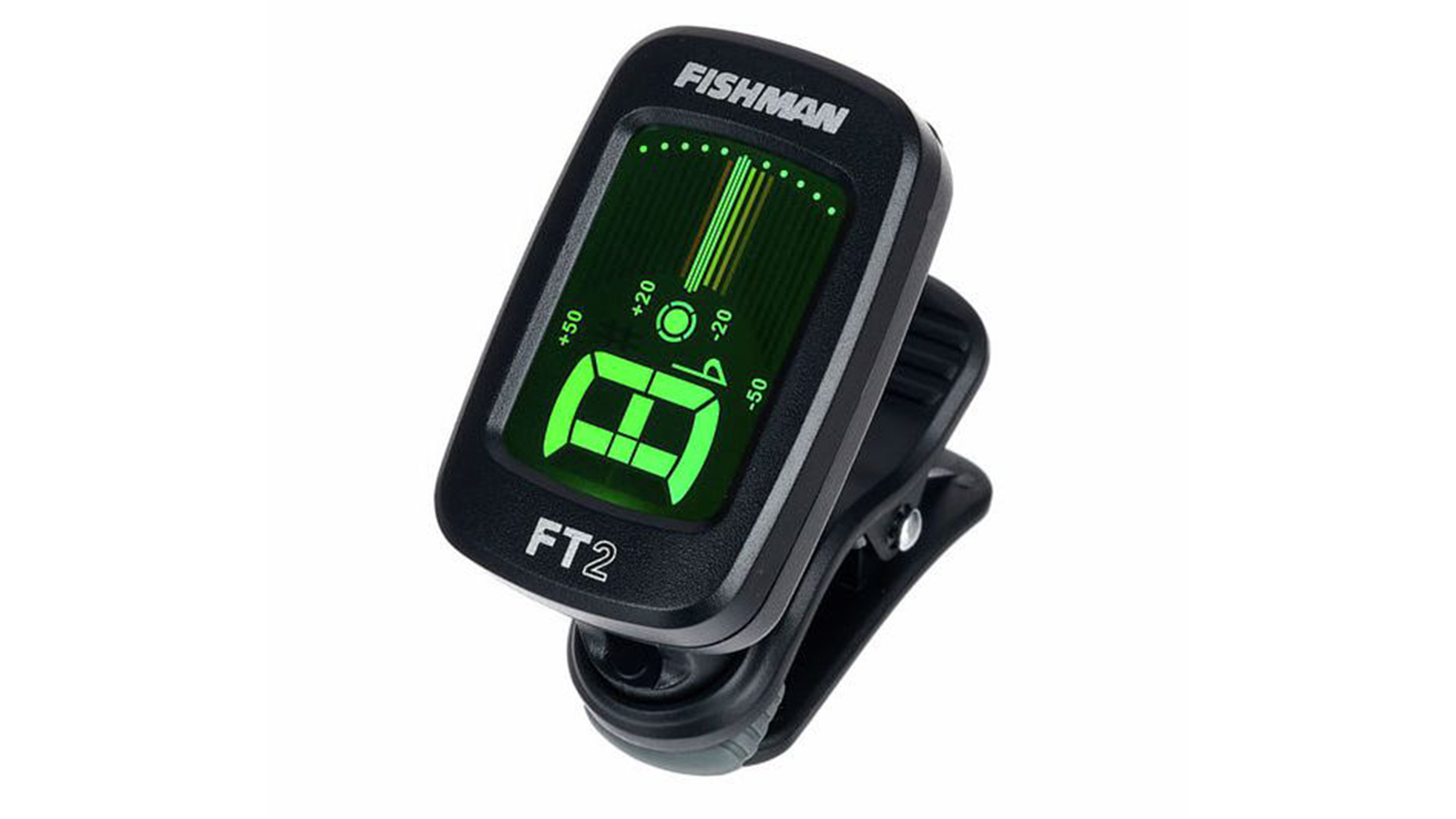
2. Fishman FT-2 Chromatic
Our expert review:
Specifications
Reasons to buy
Reasons to avoid
If you’re looking for a cheap and cheerful clip-on guitar tuner that’s accurate to a cent either way, and you don’t need bells and whistles, the FT-2 is hard to beat. Coming in at around less than 15 bucks, it's a proper bargain.
There is no HD 4K display, no holographic Pokémon to shout out how flat you are, it’s just a tuner. It’s compact and unobtrusive, and it switches itself off after five minutes of inactivity to preserve battery life. What more do you want?
And it’s not like the display doesn’t get the job done. The digital chromatic setup is a breeze; it’s red when you are sharp (which is the worst; you’d rather be flat than sharp), amber when flat, and green when you’re in tune. Simple.
Best accuracy
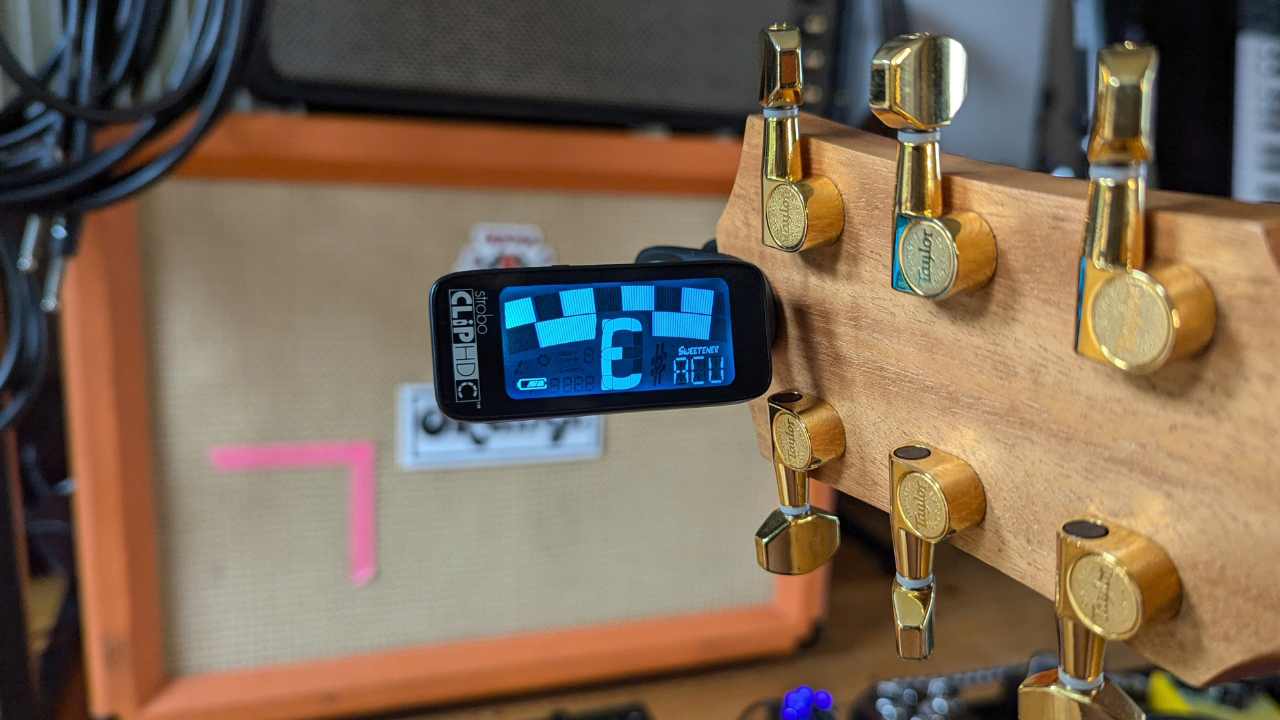
Specifications
Reasons to buy
Reasons to avoid
The StroboClip HDC has a huge HD screen, soft rubber-gripped jaws, drop tuning and capo settings, and it utilizes very clever technology not often found in a clip-on tuner. This tuner can accommodate over 50 of Peterson’s sweetened tunings, taking account of the tuning foibles of some of the most popular guitars.
Sweetened tunings take account of how, say, a Telecaster with a three-saddle bridge might wobble in tuning as you fret a chord higher up on the fretboard, and makes the adjustments accordingly. With over 50 different sweetened tunings available, the Stroboclip’s adaptability to different instruments makes this a top contender in its class. Although incredibly professional, this may be overkill for any fresh-faced beginners out there.

"If you want the best clip-on tuner money can buy, there’s no doubt that this is it. Feature-packed and incredibly accurate, it’s got a lot more depth than the majority of the competition. For many players though, that entry price will sting just a little too much."
Read more: Peterson Stroboclip HDC review
Best compact
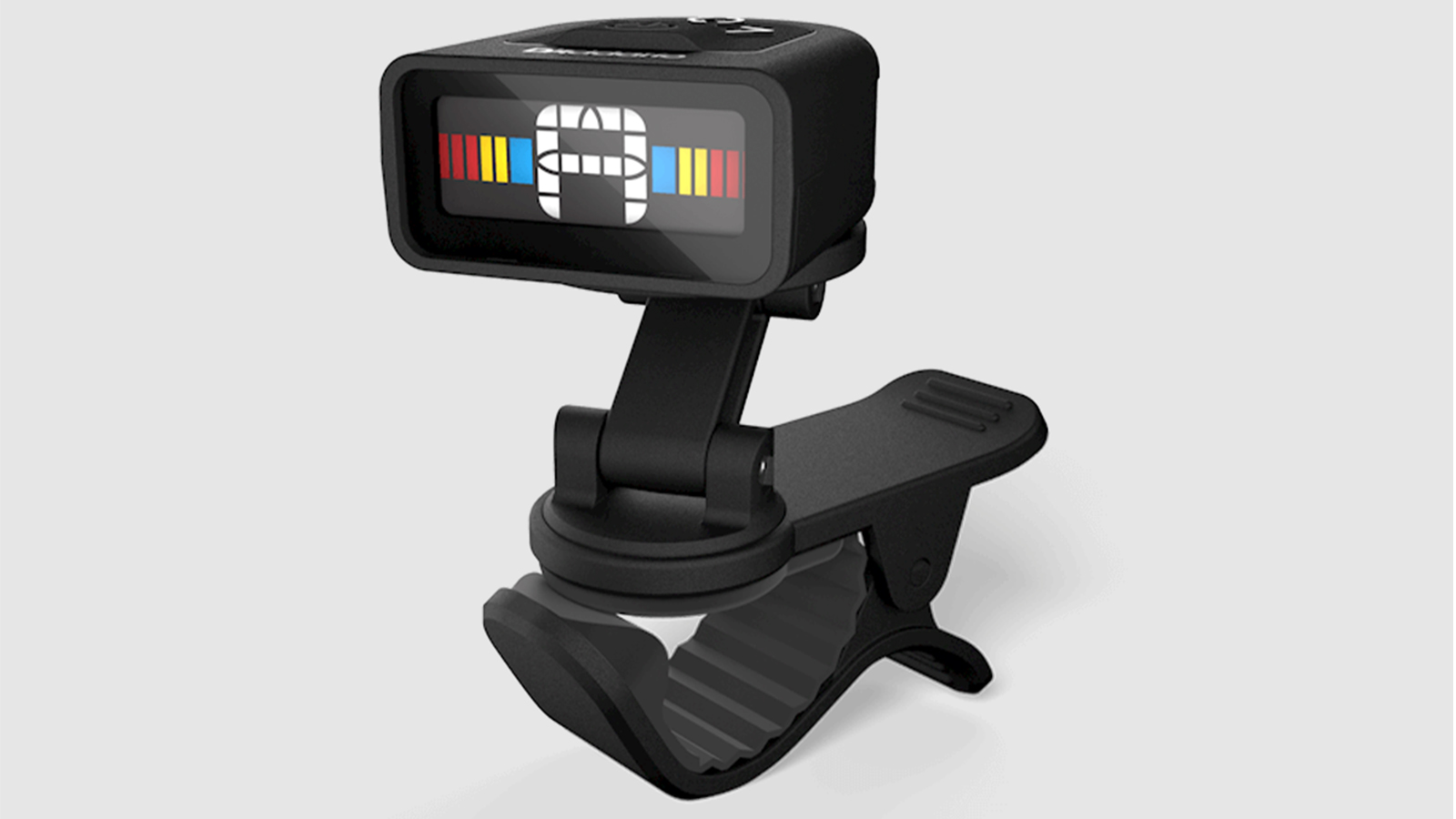
4. D'Addario NS Micro Universal
Our expert review:
Specifications
Reasons to buy
Reasons to avoid
The NS Micro Universal has a ratchet clip that allows it to fit discreetly onto pretty much any headstock, front or rear, and it has a 360-degree swivel adjustment and extendable arm to help position it so you can see the LCD screen as you play. Although small in stature, I found the bright LCD makes the tuner a breeze to use, even if my eyesight isn’t what it used to be – blast getting older!
In my experience, it's very light so it won’t tilt your headstock should you wish to keep it on throughout your performance. It’ll tune an electric guitar, but so too a bass, mandolin, banjo and so on, making it a versatile studio companion. There’s a visual metronome mode, too, ideal if your drummer is getting a bit enthusiastic.
And the newest version is rechargeable, so replacing batteries is something you'll no longer need to worry about.
Best beginner
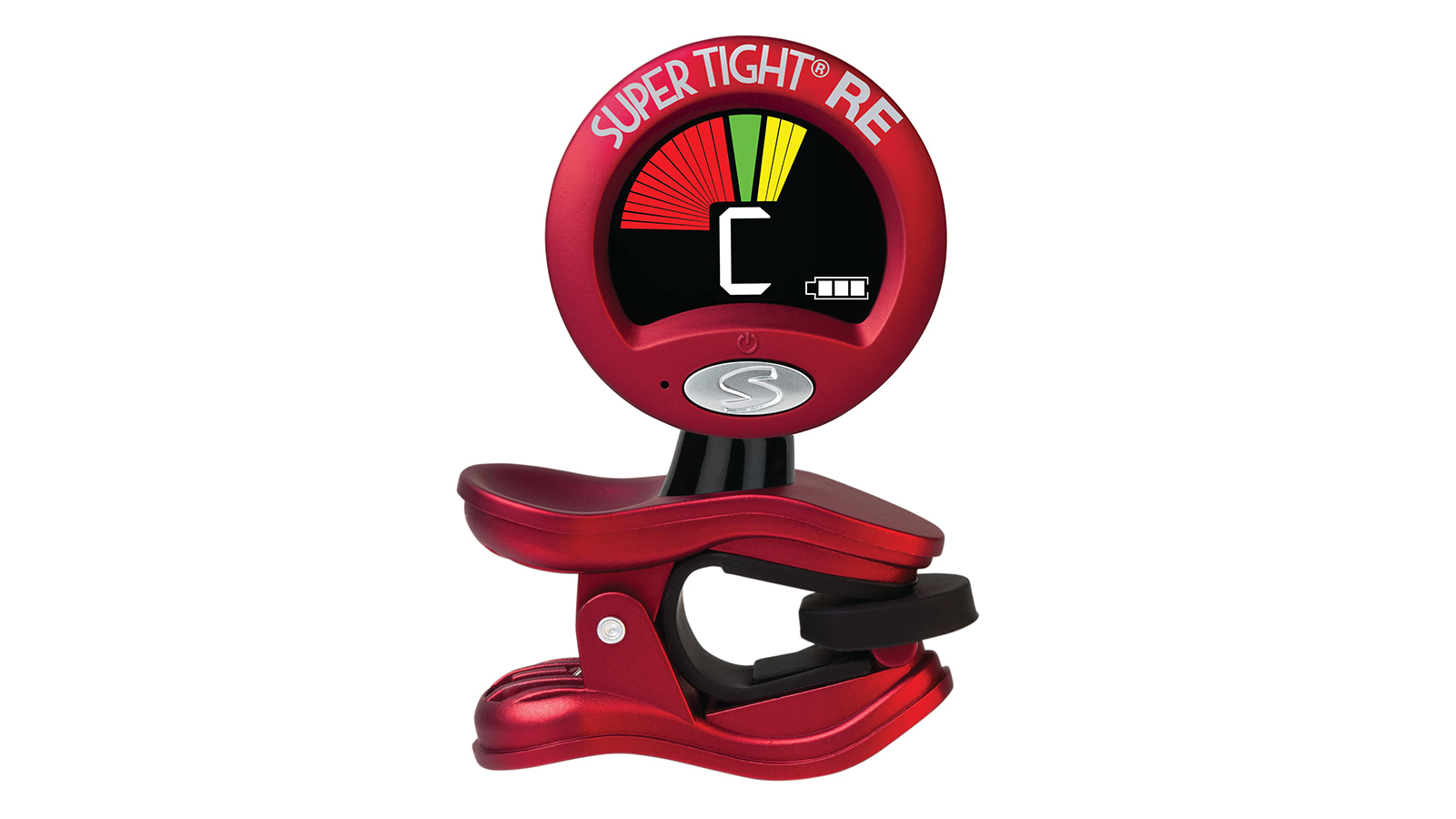
5. Snark ST-2 Super Tight
Our expert review:
Specifications
Reasons to buy
Reasons to avoid
Snark makes clip-on guitar tuners in many different colors and in many different styles, but there is a recurring theme in that they are all very accessibly-priced and have a bright, colorful screen that makes them visible in low-light situations.
The Super Tight is exactly that. It clamps on tight to your headstock, offering a chromatic tuner that can be switched between microphone mode for tuning acoustic instruments and vibration mode, which uses a transducer.
There is even a tap-tempo metronome mode, which I found to be an excellent feature at the price. If you’re looking for an entry-level clip-on guitar tuner that’s small enough to throw in the gigbag or jacket pocket, this is a very decent option.
Best for lefties
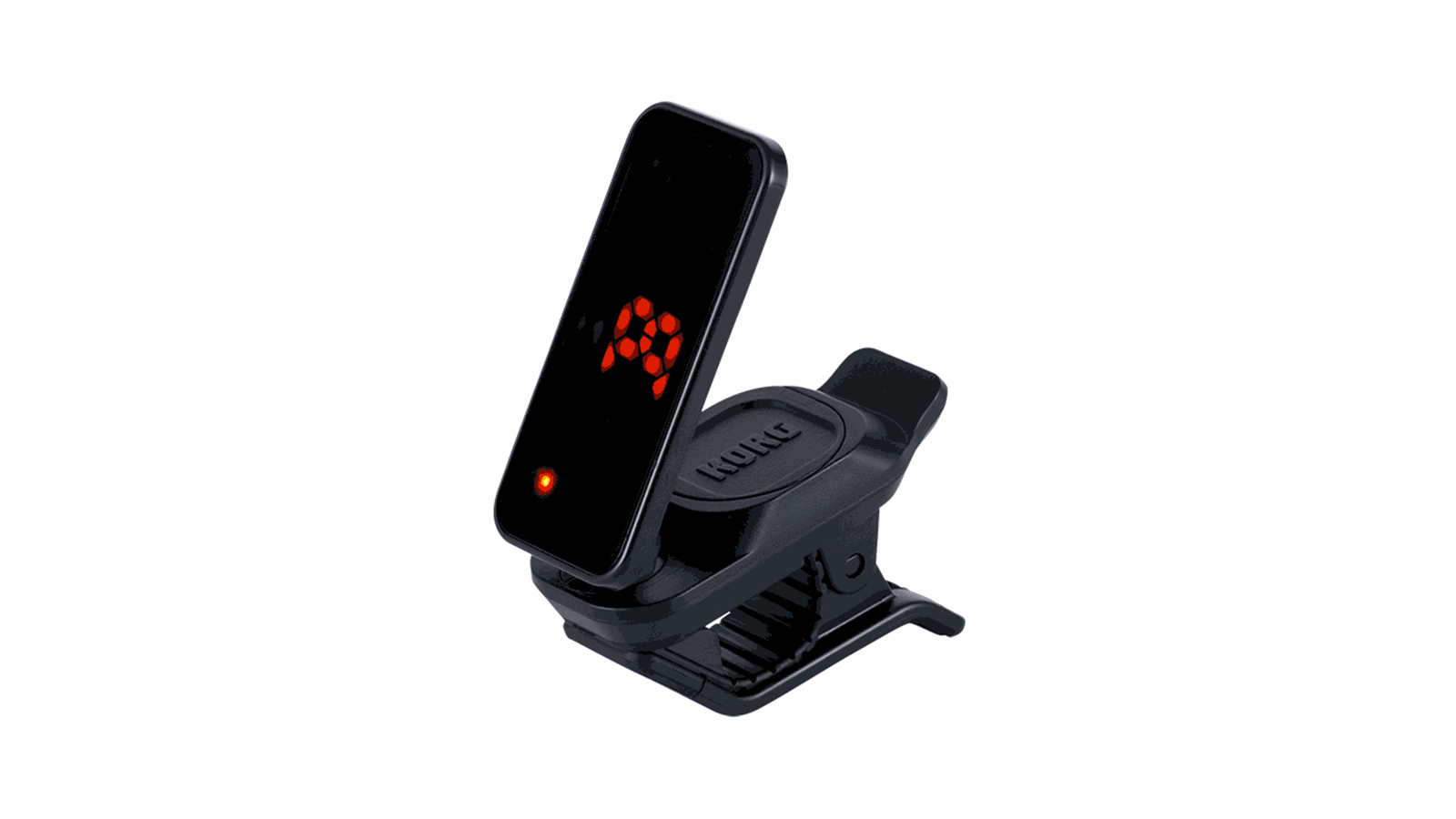
6. Korg Pitchclip 2+
Our expert review:
Specifications
Reasons to buy
Reasons to avoid
The original Pitchclip has been improved. While the PC2 remains an excellent super-budget option you can pick up for 12 bucks and it’ll be accurate to a cent, the PC2+ has a much better display, offering half-strobe and full-strobe modes.
These new modes improve the accuracy of the tuner tenfold, but perhaps just as important in a tuner with such a compact profile, the PC2+ just seems brighter and more readable in all situations, great for dark stages.
Its display is reversible, making it a decent option for right and left-handed players. It’ll tune a bass, too, and while it doesn’t list the full 24 hours of playing time as its predecessor you’ll get a very respectable 18 hours from one battery.
Best acoustic tuner
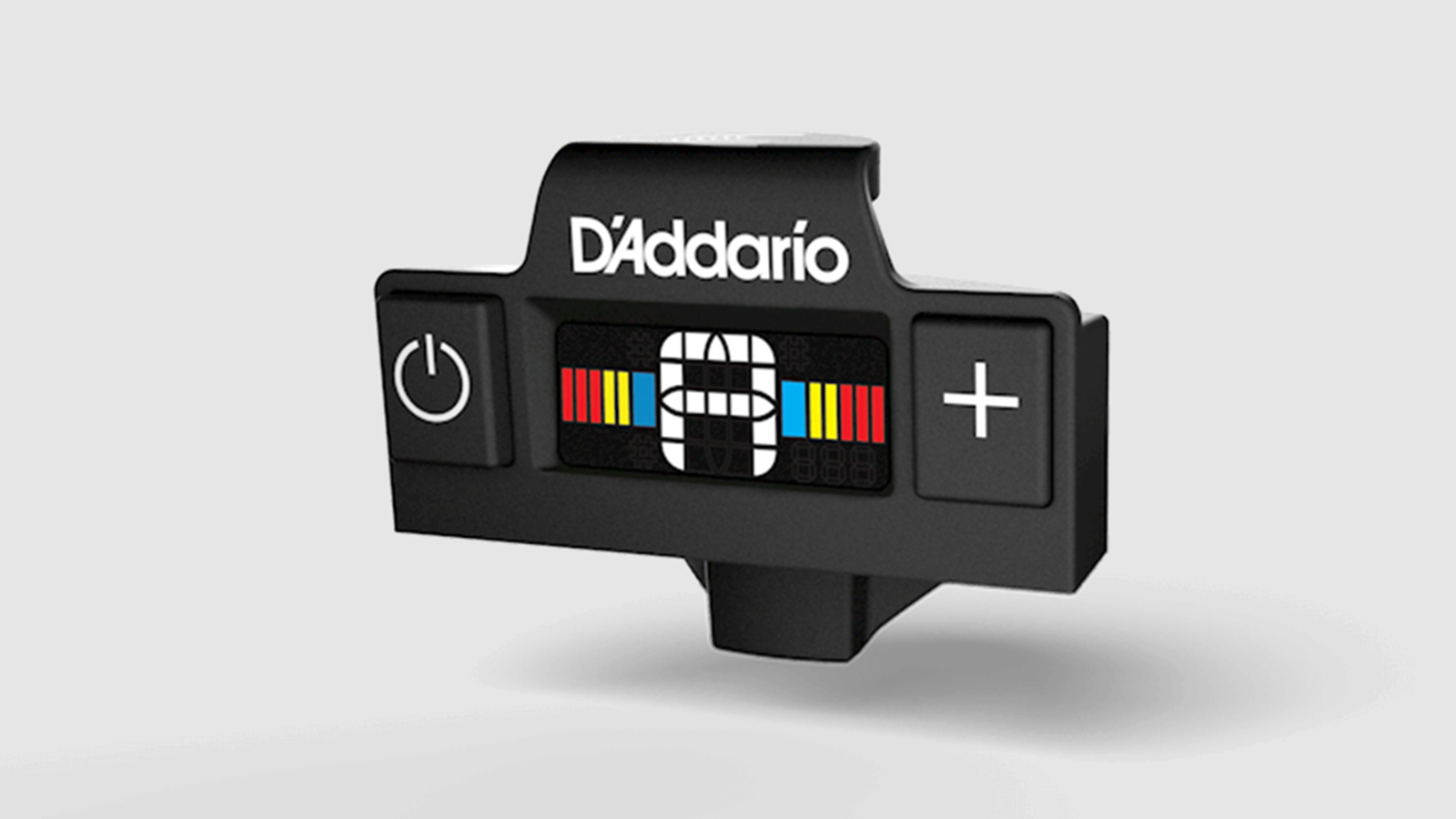
7. D'Addario NS Soundhole Tuner
Our expert review:
Specifications
Reasons to buy
Reasons to avoid
Here is a smart little clip-on guitar tuner for acoustic players. You mount it in your soundhole, so it’s for your eyes only, and when you turn it on you’ll get a bright multicolor display that’s accurate to 0.3 cents.
You can also use it on ukuleles and other acoustic stringed instruments, and the option to calibrate it from 434-445Hz means you can use it with the local orchestra if and when the occasion arises.
Not everyone likes having a clip-on tuner on the headstock, or keeping one there, so the convenience of having this secreted away means you can have it on whenever you need it. It’s easy to operate, quick, and shouldn’t foul up your guitar’s finish.
Best for live
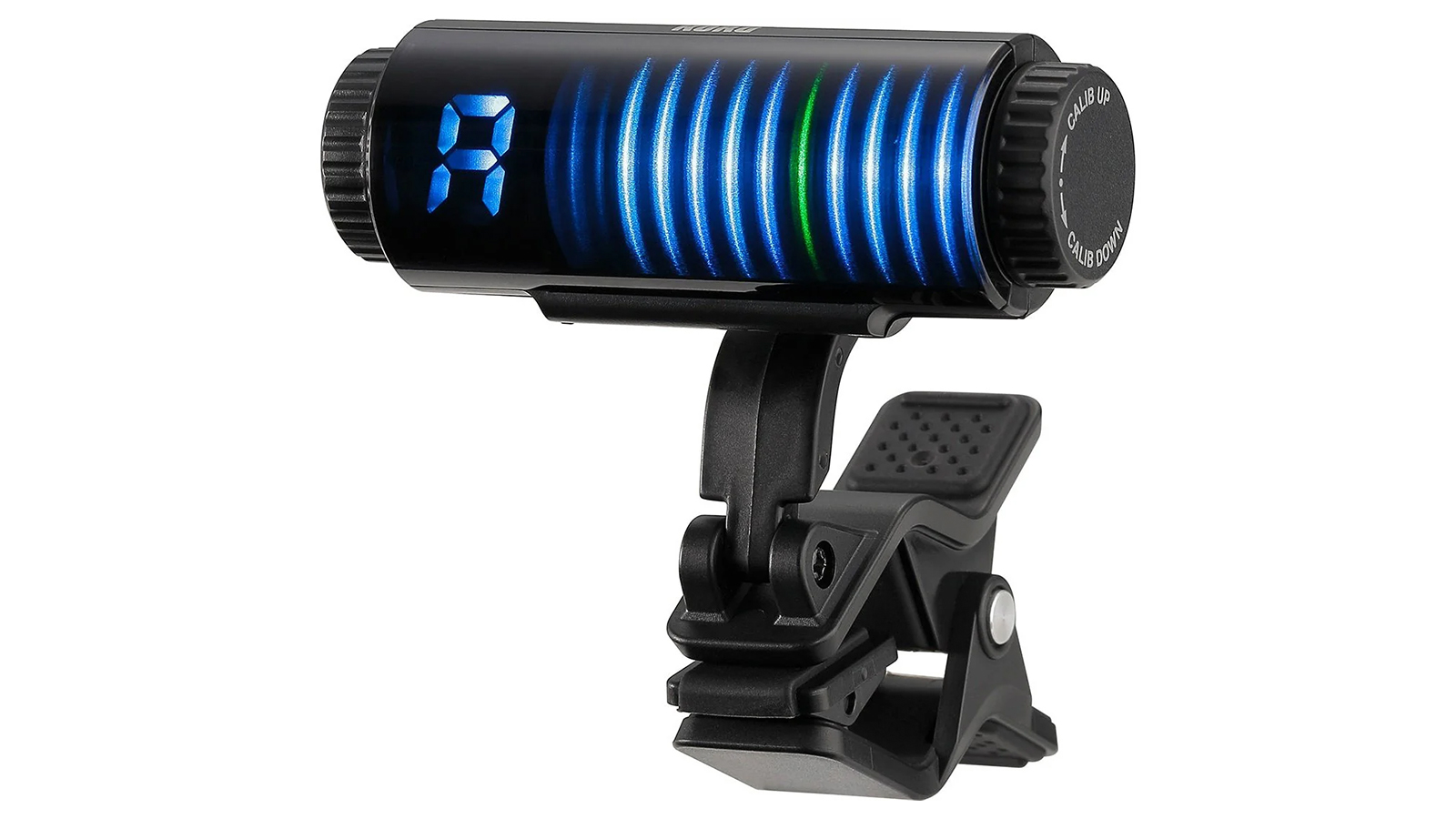
8. Korg Sledgehammer Pro
Our expert review:
Specifications
Reasons to buy
Reasons to avoid
With a curved, high-visibility 3D display, the Korg Sledgehammer Pro is ideal if you're after a clip-on tuner for live performances. The curved screen allows you to see the tuner from most angles, meaning if you’re extra rambunctious on stage and likely to knock the tuner out of place, you don't have to faff about readjusting it.
The feather in the Sledgehammer’s cap is the shuttle switch which allows you to turn on/off the tuner with one hand, making it even more useful in a live situation.
The Sledgehammer matches the ultra-precise tuning accuracy of Peterson’s StroboClip HD at 0.1 cents, making it incredibly accurate. That tuning accuracy of 0.1 cents is available across all chromatic, strobe and half-strobe modes.
How to choose the best clip-on guitar tuner for you
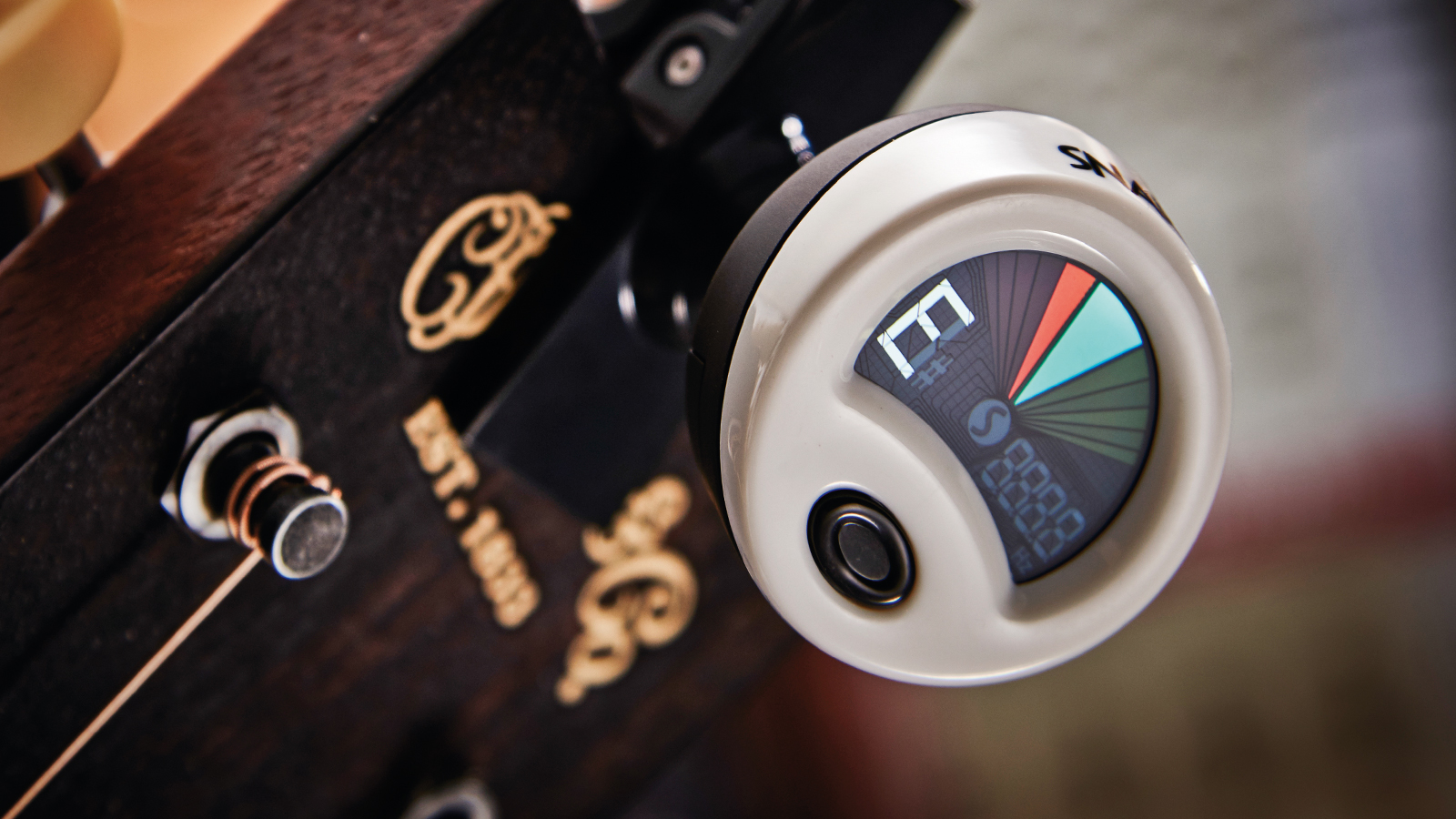
Not sure which one to go for? Think about these considerations first and you’ll arrive at the right model for you:
1. Accuracy
One of the first things to consider when looking for the best clip-on tuner for you is how accurate you need it to be. The smaller the number in terms of cents the tuner is rated at, the more accurate it will be.
If you’re just playing at home on your own, any of the tuners in this guide will provide accurate enough readings for you to get by. If you’re recording or playing alongside other instruments, or maybe you’ve got a really good ear, then you’ll want something that’s as accurate as possible.
2. Style
How the tuner looks can also be important. If you’re planning on keeping the tuner attached to your guitar all the time, then you might want something that’s not too intrusive. Of course, the smaller the tuner is, the smaller the display is likely to be, so there might be a compromise to make. If you’re an acoustic player, the D’addario NS Soundhole tuner is very discrete as it just sits on the edge of the soundhole, out of view of the audience.
3. Size
The size of the display could also be a big factor in choosing the best clip-on tuner for you. If you need to be able to tune up quickly just by glancing at the headstock, then a bigger display will benefit you. If you’re playing on dark stages, then a clear and bright display is crucial, otherwise the tuner might be too hard to read.
FAQs
Why do I need a clip-on guitar tuner?
Keeping your guitar in tune is absolutely imperative to sounding good. If you’re even slightly out of tune, you’re going to have notes that clash within your chords and your solos will just sound wrong. If you’re playing alongside other instruments then an out of tune guitar will clash with those too – that’s not good for the people in the band or the audience.
Clip-on tuners are particularly good because you can always have it handy. If you want to be able to tune between every song during a live show, you can simply leave it on your headstock. Or, if you prefer the look of your guitar without a tuner attached to the headstock, just quickly clip it on, tune up and then stick it in your pocket once you’ve finished.
How does a clip-on tuner work?
A clip-on tuner works by sensing the vibrations that are created by the strings. It detects the note being played and shows it on the screen as well as whether you’re flat, sharp or in tune.
By detecting the vibrations as opposed to listening out for the note being played, you can tune up in noisy environments. It doesn’t matter what else is audible as the tuner will only show the note(s) being played by your instrument.
Will my clip-on tuner work on bass?
Most clip-on tuners will work on a bass guitar, as well as an electric or acoustic guitar. Many tuners have different modes for different instruments like violin, ukulele, guitar, bass or chromatic which will show all the notes.
When using a clip-on tuner on a bass though, you might get better results by using the natural harmonic on the 12th fret instead of the open strings, particularly on the lower ones. It depends on the model, but if it’s taking a while to detect the open notes, try the 12th fret method and it should help.
Are clip-on tuners accurate?
The accuracy of a tuner will be measured in cents, which is 1/100 of a semitone. So, if a tuner has an accuracy of +/- 1 cent, then it’s accurate to within a hundredth of a semitone. Some of the best clip-on tuners have accuracy to a fraction of a cent meaning that they are incredibly accurate. These are particularly useful when recording or playing alongside instruments like keyboards which never go out of tune.
Are clip-on guitar tuners any good?
That’s a good question. For acoustic guitar players, it’s a no-brainer. Some acoustic-electric guitars will have an onboard tuner in their pickup and preamp system, but otherwise a clip-on is your best bet.
For electric guitar players it is a little more complicated. Of course, you could stay in tune with a pedal tuner, or with a fancy rack-mounted unit like the Korg Pitchblack Pro, but let’s imagine your pedalboard is already overcrowded as it is. Removing the tuner would free up some valuable real estate for, ooh, an analog delay pedal, for example. The clip-on tuner could make that a reality.
There are other advantages besides pedalboard space. Using a clip-on tuner takes out another variable in your signal chain; you won’t need another patch cable, it’s less cable to go through, and if you’ve got a long and complicated signal chain there’s fewer worries about high-end roll-off or other neurotic considerations that keep guitarists awake at night.
Another practical consideration, and we’re definitely not cork-sniffing here, is that the clip-on guitar tuner is portable, typically taking a lithium-ion battery. You can keep it in your case or in some cases your pocket. Share it with your bandmates; if you have a ukulele or bass guitar player in your ranks, it will tune them up, too. And if everyone is using the same tuner, then you’re all tuning to the same standard and your jam sessions will be even more harmonious.
Now, a quick word of caution if you own a vintage acoustic or a very high-end instrument with a delicate nitrocellulose lacquer finish: some manufacturers, such as Snark, recommend that you don’t use them with fine finishes. While most clip-ons should be okay for all finishes, it’s always best to check it is suitable for your guitar’s finish before taking the plunge.
Key terms explained
Polyphonic
A polyphonic tuner is one that can read the tuning of more than one string at once. On something like the TC Electronic Polytune, you can play all six strings at once and get a reading for each one.
Chromatic
A chromatic tuner only allows for single string tuning. It will read all notes in the western scale, but you’ll have to tune each string individually. Playing more than one string at once will mean you don’t get a proper reading on the display.
Strobe
Strobe tuners use flashing or rotating displays to highlight how in tune a note is. If it’s moving fast, then you need to tune more; the slower it gets, the more in tune your note is becoming. Strobe tuners usually make for the most accurate ones.
Cent
Tuning is measured in cents and there are 100 cents in a semitone.
How we choose products for this guide
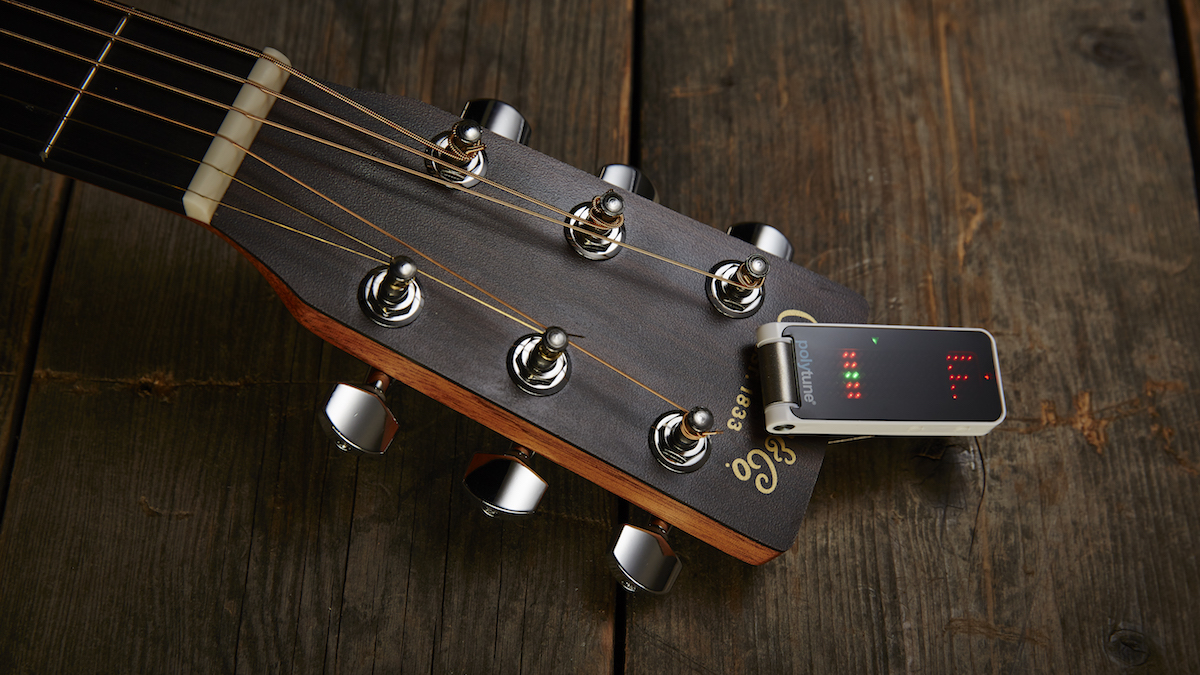
Here at Guitar World, we are experts in our field, with many years of playing and product testing between us all. We live and breathe everything guitar and bass related, and we draw on this knowledge and experience of using products in live, recording and rehearsal scenarios when selecting the products for our guides.
When choosing what we believe to be the best clip-on guitar tuners available right now, we combine our hands-on experience, user reviews and testimonies and engage in lengthy discussions with our editorial colleagues to reach a consensus about the top products in any given category.
First and foremost, we are guitarists, and we want other players to find the right product for them. So we take into careful consideration everything from budget to feature set, ease of use and durability to come up with a list of what we can safely say are the best clip-on guitar tuners on the market right now.
Read more about our rating system, how we choose the gear we feature, and exactly how we test each product.
Read more:
You can trust Guitar World
- Just starting out? These are the best acoustic guitars for beginners
- And the best beginner electric guitars
- Take a look at some of the best gifts for guitar players
- Secure your axe with the best guitar strap locks
- Boost playing comfort with the best guitar straps
All the latest guitar news, interviews, lessons, reviews, deals and more, direct to your inbox!
Jonathan Horsley has been writing about guitars since 2005, playing them since 1990, and regularly contributes to publications including Guitar World, MusicRadar and Total Guitar. He uses Jazz III nylon picks, 10s during the week, 9s at the weekend, and shamefully still struggles with rhythm figure one of Van Halen’s Panama.
- Matt McCrackenJunior Deals Writer
- Ross Holder
- Richard Blenkinsop

